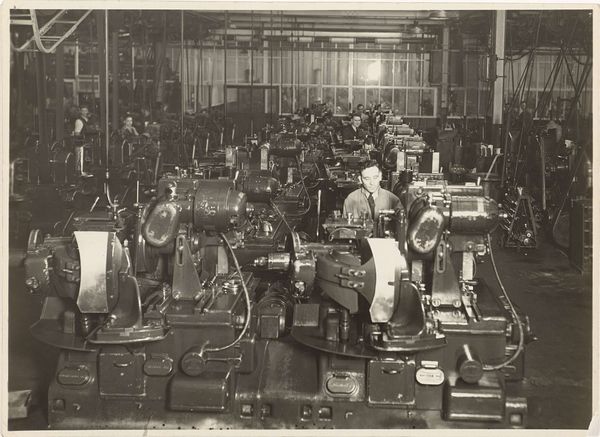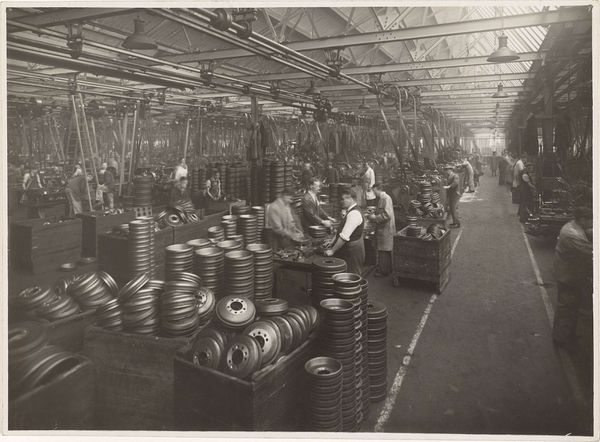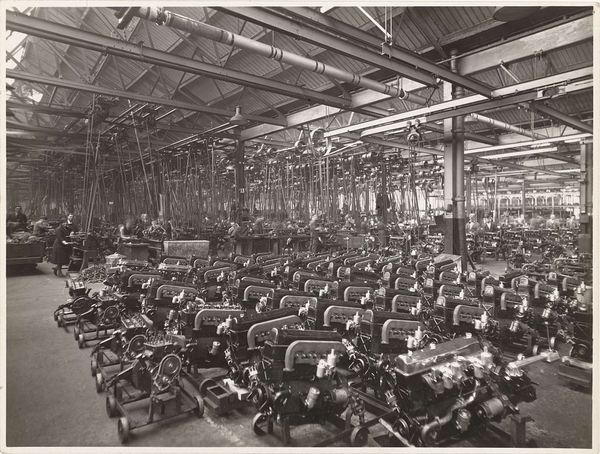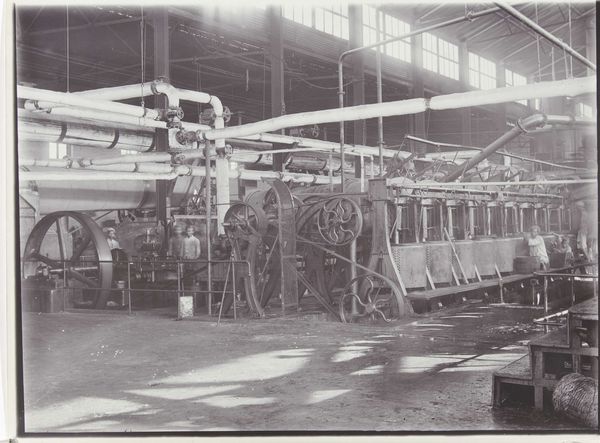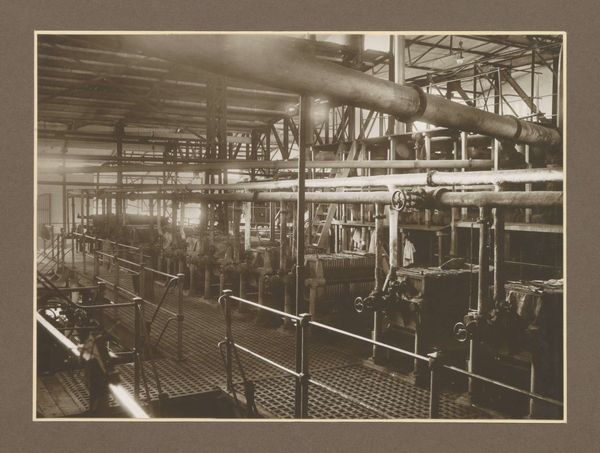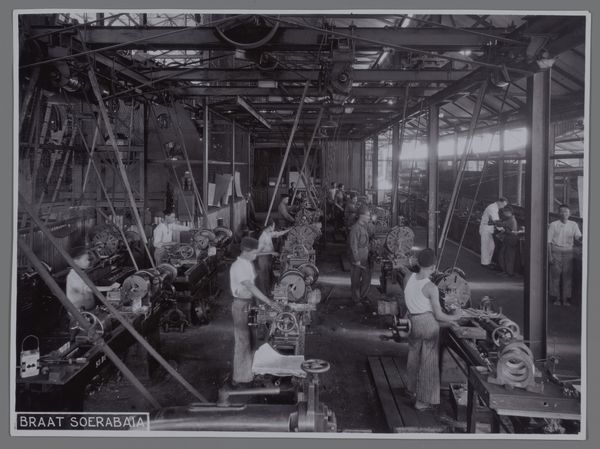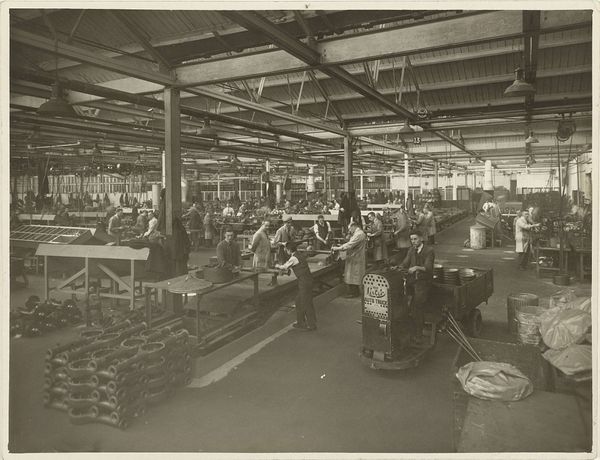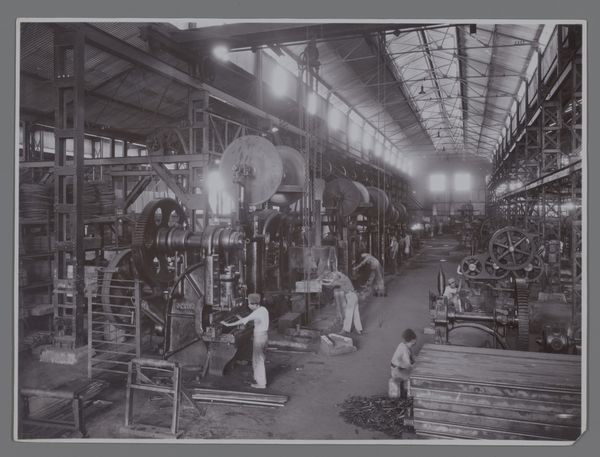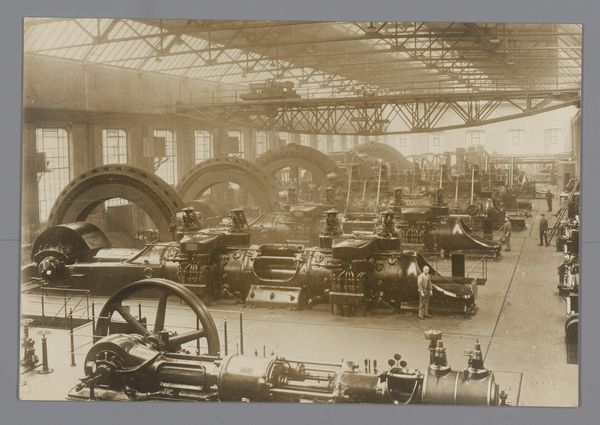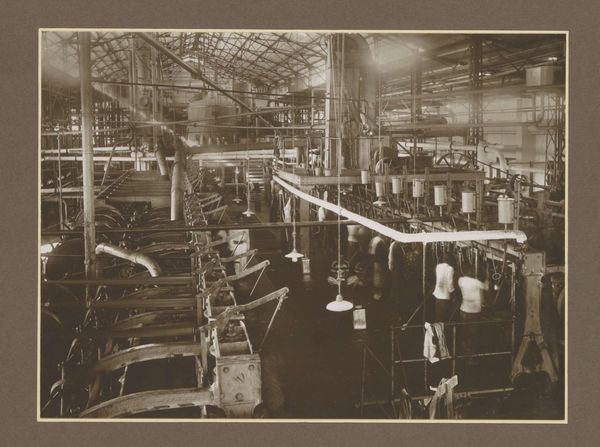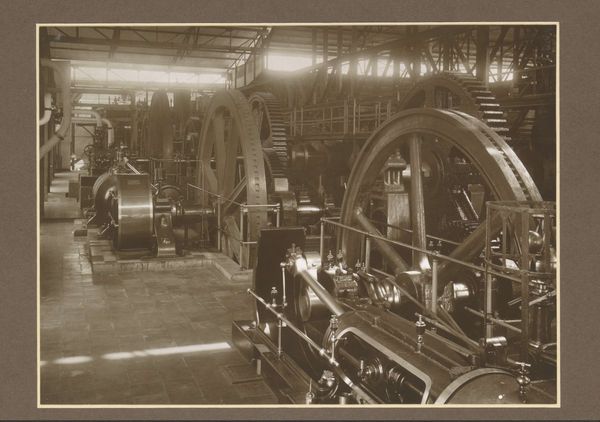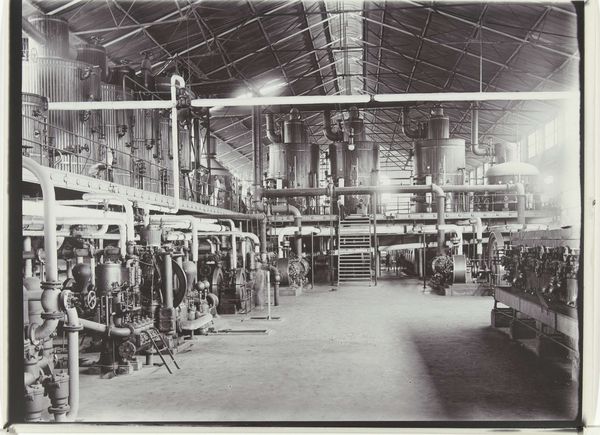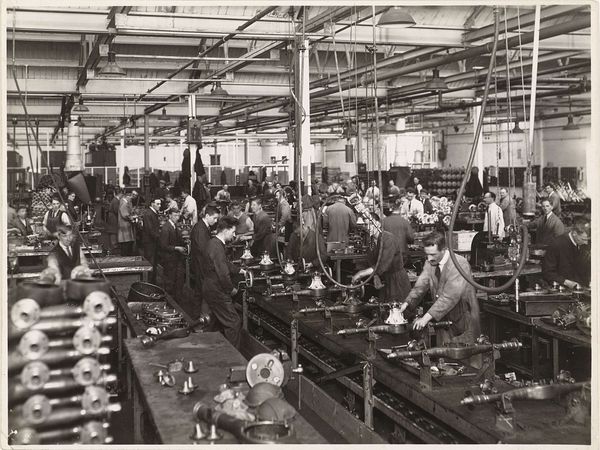
Machines van de Wolseley Motor Company in de Ward End Works, de fabriek in Birmingham 1932
0:00
0:00
photography, gelatin-silver-print
#
archive photography
#
photography
#
historical photography
#
geometric
#
gelatin-silver-print
#
monochrome photography
#
monochrome
Dimensions: height 150 mm, width 207 mm
Copyright: Rijks Museum: Open Domain
Editor: This gelatin-silver print, taken in 1932 by F.R. Logan, presents "Machines van de Wolseley Motor Company in de Ward End Works, de fabriek in Birmingham" – or, the Wolseley Motor Company factory in Birmingham. It’s overwhelmingly mechanical; the repetition of machines stretches far into the distance. How does the photograph capture the industry of the time? Curator: Indeed, this image is powerfully representative of its time, socially and culturally. The factory setting is key. Photography like this became a powerful tool for both documenting and, frankly, celebrating industrial progress. Notice how the artist frames the scene. Editor: You mean how the photograph emphasizes order? Everything is lined up so neatly. Curator: Exactly. It projects an image of control, efficiency, and modernity – values that were increasingly important as industry expanded in the early 20th century. However, what about the workers? We don't see a single person. Editor: That’s a good point. It’s as if the machines themselves are the heroes of the story, not the people who operate them. The framing feels deliberate, doesn't it? It presents a specific narrative about industrial progress, while also raising some unspoken questions. Curator: Absolutely. Who is the photograph for, and what is its purpose? Is it purely documentation, or is it meant to impress or even propagandize a particular view of industry? Consider who controlled these images and how they were disseminated. Editor: I see how examining this artwork can expose underlying socio-political forces, not just the aesthetics. I had thought that this historical photograph showed an industrial scene objectively. Curator: It encourages one to consider the public role and politics involved in displaying this industrial picture. The history of images are the history of power and perspective.
Comments
No comments
Be the first to comment and join the conversation on the ultimate creative platform.
